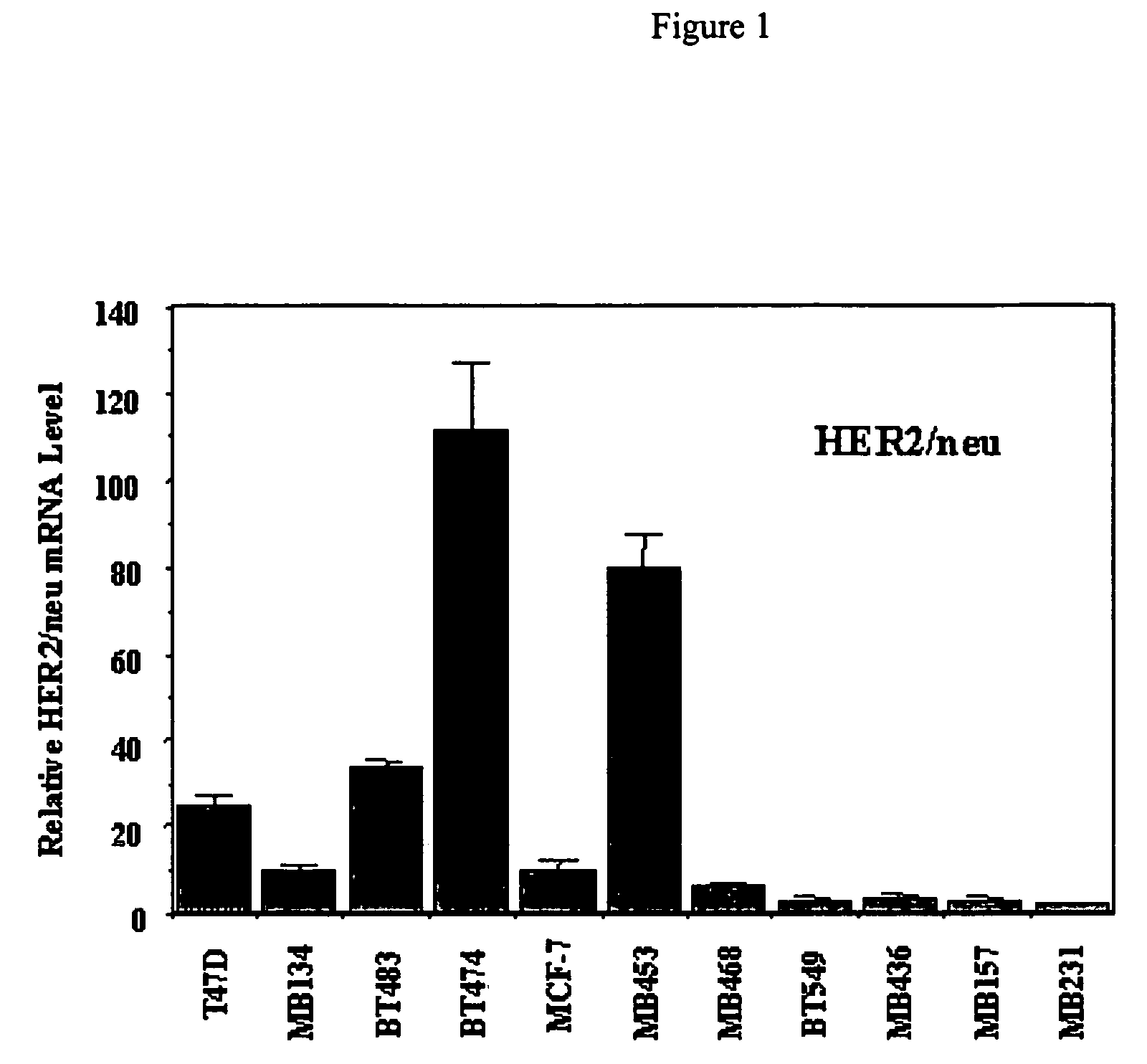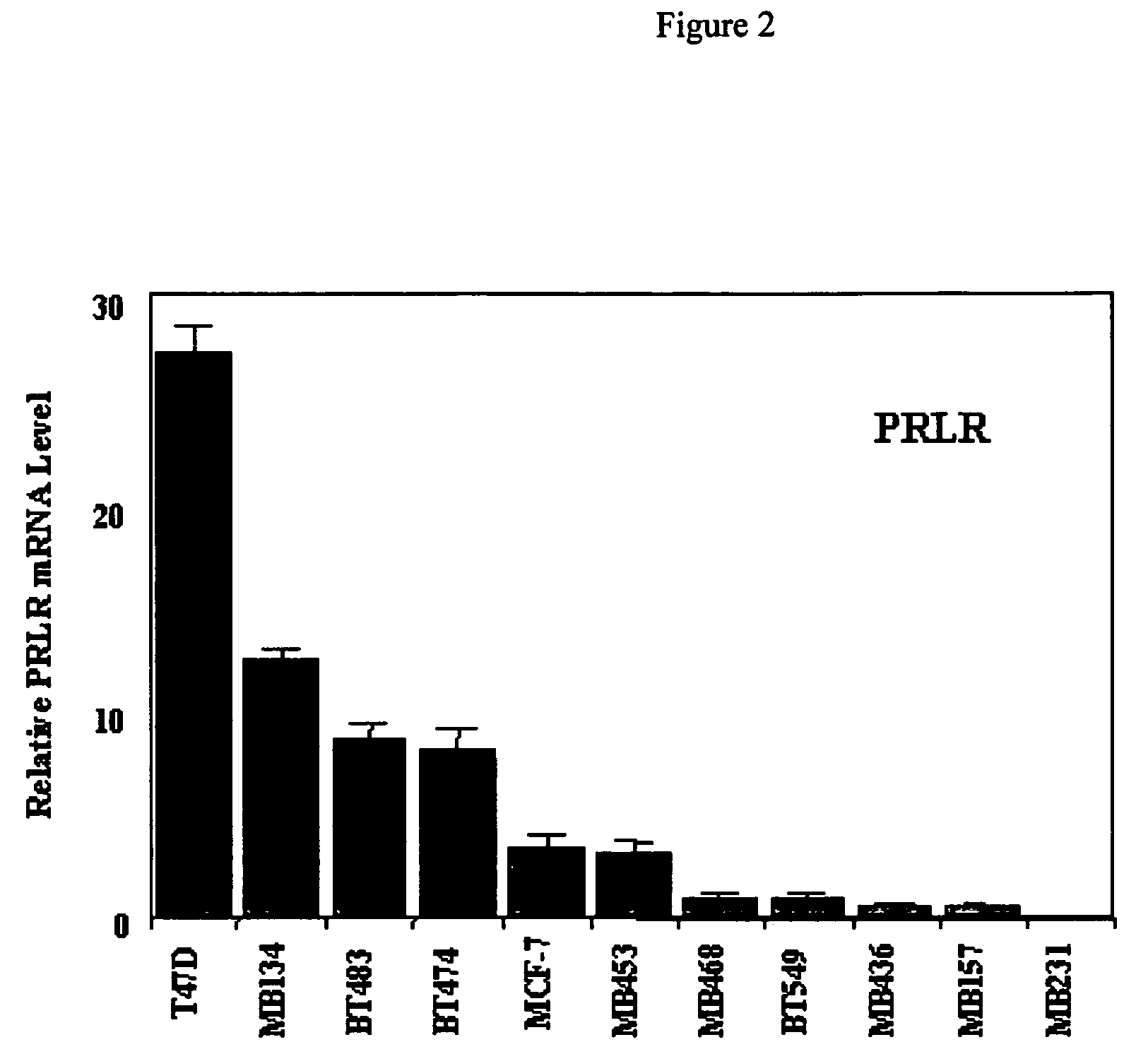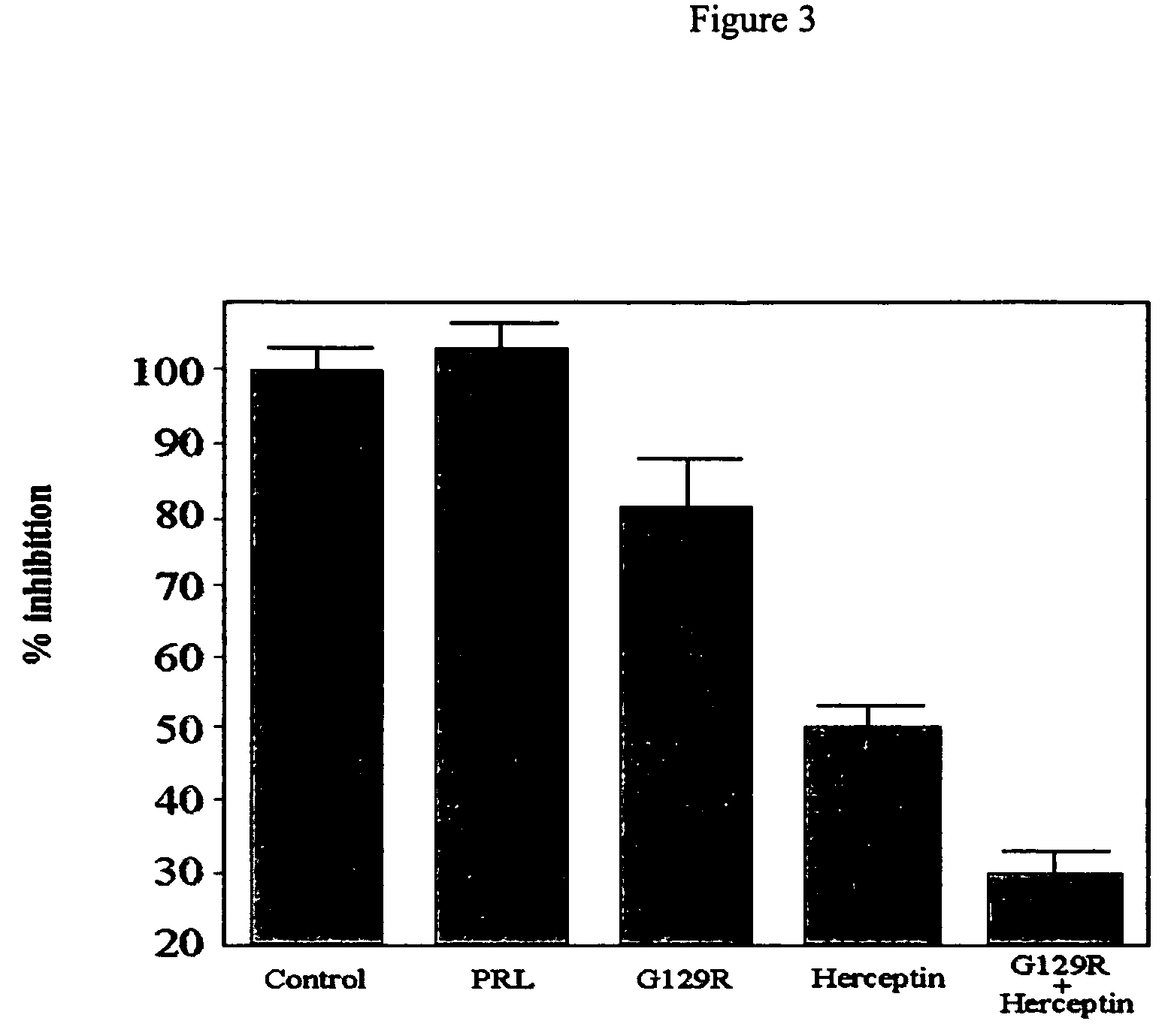Use of prolactin receptor antagonists in combination with an agent that inactivates the HER2/neu signaling pathway
a prolactin receptor and antagonist technology, applied in the field of cancer compositions and methods, can solve the problems of low response rate to many therapies, and achieve the effect of slowing tumor growth
- Summary
- Abstract
- Description
- Claims
- Application Information
AI Technical Summary
Benefits of technology
Problems solved by technology
Method used
Image
Examples
example 1
Design of a Prolactin Receptor Antagonist
[0080]Since there is no crystal structural data presently available regarding hPRL, a computer algorithm program developed by Garnier et al., J. Mol. Biol., 120:97-120 (1978), was used to analyze and compare the secondary structures of hPRL and hGH. The results showed that the overall alpha-helix regions are very similar, suggesting that these hormones share a similar overall conformation. When the amino acid sequences in the third alpha-helix were compared between GHs and PRLs, it is clear that the Gly 129 of hPRL corresponds to Gly 120 of hGH and it is absolutely conserved among the GH / PRL family (Chen et al., J. Biol. Chem. 269:15892-15897 (1994)). Therefore, a Gly to Arg substitution mutation in hPRL was prepared in order to generate a hPRL receptor specific antagonist.
example 2
Preparation of G129R
[0081]Cloning of the Human Prolactin Gene
[0082]Human PRL was successfully cloned using reverse transcription (RT) followed by polymerase chain reaction (PCR). Briefly, human pituitary polyA RNA (CloneTech, Inc. Palo Alto, Calif.) was used as template. A hPRL antisense primer was designed starting 2 bases from the stop codon (TAA) of hPRL cDNA (5′ GCTTAGCAGTTGTTGTTGTG 3′ SEQ ID NO:1) and a sense primer was designed from ATG (5′ ATGAACATCAAAGGAT 3′ SEQ ID NO:2). RT / PCR was carried out using a kit from Perkin-Elmer Cetus, Inc. (Norwalk, Conn.). The nucleotide sequence of the resulting hPRL was determined by the dideoxy chain-termination method using modified T7 DNA polymerase (Sequenase, United States Biochemical), and was found to be identical to that reported in GenBank except for a one base difference which results in a silent mutation at codon 21 (CTG→CTC). A schematic representation of the cloning process, including preparation of the pUCIG-Met expression vecto...
example 3
Inhibitory Activity of G129R
[0088]Materials and Methods
[0089]Radioreceptor binding assay. Purified I:PRL was labeled with Na 125I by the lactoperoxidase method to a specific activity of 80-105.mu.Ci / .mu.g as described in Harding et al., 1996, J. Biol. Chem. 271:6708-6712. Briefly, 1.0 mCi of Na125I was added to 1 mg of HPRL. Lactoperoxidase (10 μg dissolved in 10 μl of 0.4 mol / liter acetate butter, pH 5.6) and H2O2 (5 μl of 1.76 mmol / liter) were then added. After 30 min, the reaction was terminated by the addition of 100 μl of transfer buffer (0.47 mol / liter sucrose, 0.06 mol / liter KI, sodium azide 0.02%, pH 7.6). Radiolabeled hPRL was then separated by SEPHADEX® (cross-linked dextran gel) G-100 chromatography. Human breast cancer cells were plated in 6-well plates. After preincubation in serum-free DMEM for 2-3 hours to deplete serum, the monolayer of cells was exposed to serum-free conditioned medium containing 125I-hpRL (50,000 cpm) in the presence of various concentration of HPR...
PUM
| Property | Measurement | Unit |
|---|---|---|
| pH | aaaaa | aaaaa |
| pH | aaaaa | aaaaa |
| temperature | aaaaa | aaaaa |
Abstract
Description
Claims
Application Information
 Login to View More
Login to View More - R&D
- Intellectual Property
- Life Sciences
- Materials
- Tech Scout
- Unparalleled Data Quality
- Higher Quality Content
- 60% Fewer Hallucinations
Browse by: Latest US Patents, China's latest patents, Technical Efficacy Thesaurus, Application Domain, Technology Topic, Popular Technical Reports.
© 2025 PatSnap. All rights reserved.Legal|Privacy policy|Modern Slavery Act Transparency Statement|Sitemap|About US| Contact US: help@patsnap.com



